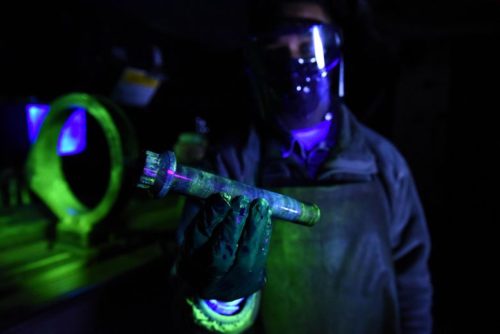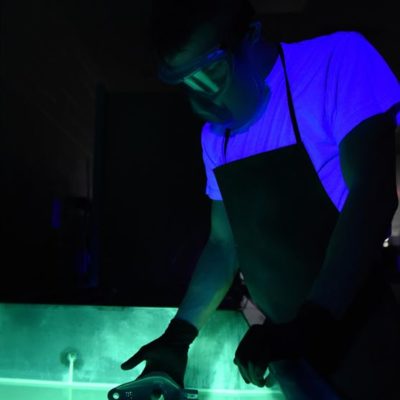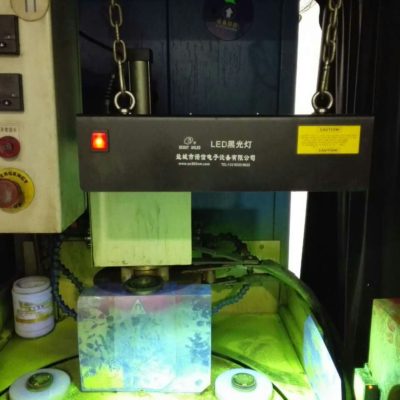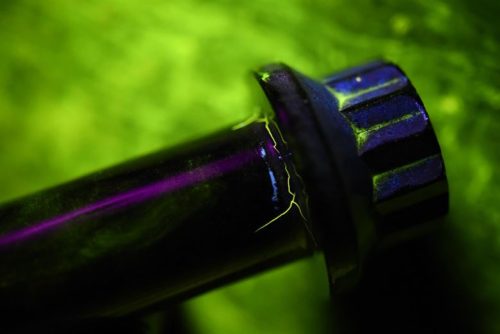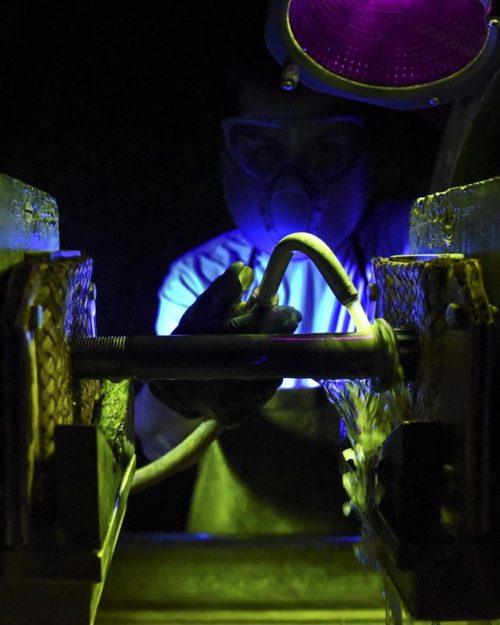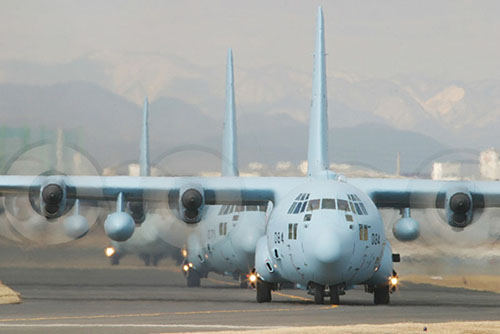U.S. Air Force Airman 1st Class James Schwein, who is from the 19th Maintenance Squadron (MXS) at Little Rock Air Force Base, Arkansas, USA, is now using a variety of nondestructive inspection (NDI) to better identify defects such as potential cracks on various US aircraft components. He has found the small cracks in the aircraft parts by using UV black lights.
“We focus on preventive maintenance,” said Derik Shannon, a US Air Force staff member and an experienced NDT technician in the maintenance squadron. “We use non-intrusive methods to check for some defects on the aircraft.”
With the use of chemical containers, conveyor belts and some complex machines, the maintenance squadron is gradually adopting more non-destructive testing methods. Specifically, they now use five NDT conventional methods to detect discrepancies – magnetic particle testing, penetration testing, X-ray, ultrasonic and eddy current testing technology. Each technology is based on different principles to effectively identify defects on the aircraft, thereby protecting the structural integrity of the aircraft.
Excellent combination of Fluorescent Liquid and UV Black Lights:
The aircraft part is immersed in the fluorescent penetrant, and a small gap in the surface of the material penetrates into the fluorescent penetrant, and then a potential crack can be identified under the UV black light. (Image credit: Airman 1st Class Kevin Sommer Giron)
The two commonly used detection methods in the non-destructive testing laboratory of the Air Force Base are fluorescent magnetic particle testing and penetration testing. The principle of both methods is to make it easier to detect cracks and corrosion by immersing the component to be inspected in a fluorescent liquid and observing it under uv black lights to find minor structural defects. When a defect is found, it will be recorded, marked and ready for the next repair.
The crack on the main landing wheel bolt is clearly visible under the black light as shown below. (Image credit: Airman 1st Class Kevin Sommer Giron.)
The magnetic particle oil sinks into the cracks of the wheel bolts of the C-130J aircraft. Under the illumination of the black light, the cracks will form obvious magnetic marks. (Image credit: Airman 1st Class Kevin Sommer Giron.)
The most commonly used eddy current testing technology:
The most commonly used non-destructive testing technology of the base is eddy current testing technology. The principle is to place the coil with alternating current on the metal plate to be tested or outside the metal tube to be tested. At this time, the coil will be produced in and around the coil. The alternating magnetic field causes a swirling induced alternating current to be generated in the test piece, which is called eddy current. The distribution and size of the eddy current, in addition to the shape and size of the coil, the magnitude and frequency of the alternating current, etc., also depend on the conductivity, permeability, shape and size of the test piece, the distance from the coil, and the presence or absence of cracks on the surface, defects, etc. Therefore, under the condition that other factors are relatively unchanged, the change of the magnetic field caused by the eddy current is measured by a detecting coil, and the magnitude and phase change of the eddy current in the test piece can be inferred, thereby obtaining the electrical conductivity, the defect, the material condition and other physical quantities, information such as changes in shape, size, etc., or the presence or absence of defects.
The Air Force Base’s NDT team is now able to perform these tests in their research labs as well as in areas away from the lab (such as the apron).
“We recently checked the entire external situation of the C-130J after the hail,” Shannon said. “With the eddy current probe, we counted that it took about 48 hours to complete the inspection task in about eight hours.”
In addition, X-ray and ultrasonic inspection techniques are often used at the site, and the staff use these two methods to check the structural integrity of the part without disassembling the parts.
All in all, the Little Rock Nondestructive Testing Laboratory now needs to test about 3,000 parts per year, from the entire aircraft to the tiny bolts on the plane.
“The small things we do can guarantee the smooth flight of large aircraft. With these non-destructive testing techniques, we can ensure that every small piece of structure is complete,” said a nondestructive testing staff at the Air Force Base.
Reference Article: Airmen conduct preventative MXS on C-130J fleet

